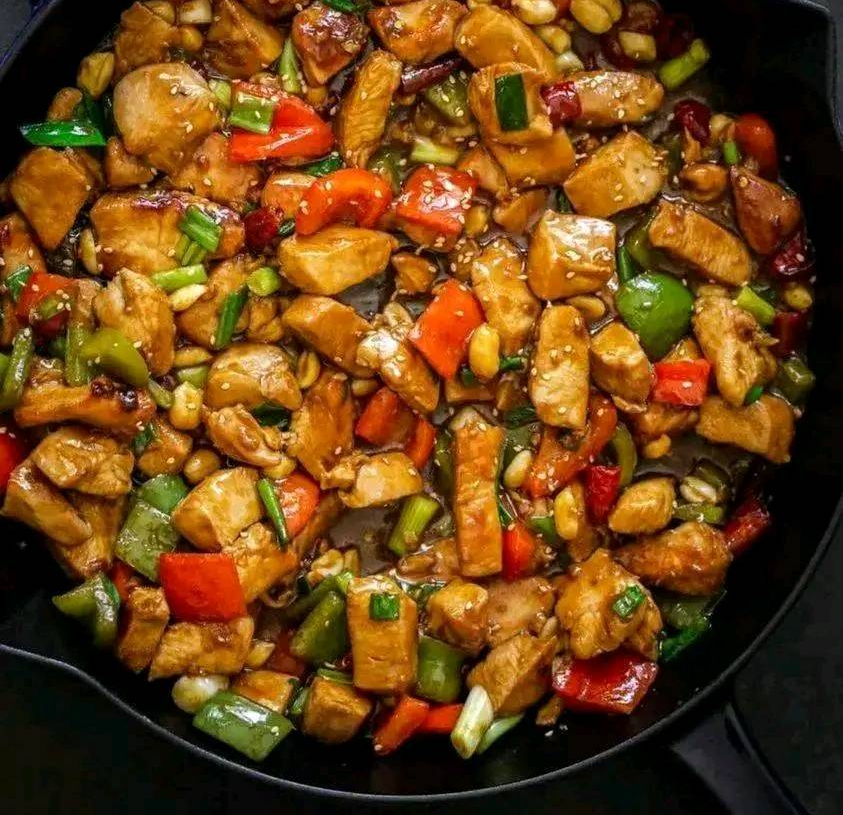In the heart of Sichuan province, nestled within the bustling streets of Chengdu, lies a culinary masterpiece revered across the globe: Kung Pao Chicken. Its origins shrouded in centuries of tradition and innovation, this iconic dish represents the epitome of Chinese gastronomy. Legend has it that during the Qing Dynasty, a provincial governor named Ding Baozhen developed a penchant for fiery flavors, inspiring the creation of what would become Kung Pao Chicken. With its bold combination of tender chicken, crunchy peanuts, and vibrant chili peppers, each bite is a harmonious symphony of taste and texture, a testament to the culinary expertise of the Sichuan region.
As one delves deeper into the history of Kung Pao Chicken, one discovers a rich tapestry of cultural influences woven into its very essence. From the ancient Silk Road trade routes that facilitated the exchange of ingredients and techniques, to the imperial kitchens where master chefs refined their craft, the evolution of this dish mirrors the dynamic narrative of China itself. Every element, from the tender chunks of chicken to the aromatic blend of spices, reflects the ingenuity and resourcefulness of generations past, ensuring that Kung Pao Chicken remains a timeless classic cherished by food enthusiasts worldwide.
Beyond its gastronomic appeal, Kung Pao Chicken holds a special place in the hearts of those who savor its fiery delights. It is more than just a dish; it is a cultural emblem, a symbol of camaraderie and conviviality. In Chinese households, it is often shared amongst family and friends during festive gatherings, its spicy kick serving as a catalyst for lively conversations and cherished memories. Even beyond China’s borders, Kung Pao Chicken has transcended culinary boundaries, captivating the palates of adventurous diners seeking a taste of authentic Chinese cuisine.
What sets Kung Pao Chicken apart from other dishes is its perfect balance of flavors and textures, meticulously crafted to tantalize the senses. Each ingredient plays a crucial role in the symphony of taste, from the succulent chicken marinated in a savory sauce to the crisp vegetables that add a refreshing crunch. But it is the fiery heat of the chili peppers that truly sets Kung Pao Chicken apart, infusing every bite with a bold, spicy kick that leaves a lasting impression. It is this harmonious blend of sweet, savory, and spicy notes that has earned Kung Pao Chicken its rightful place as a culinary masterpiece.
As one takes their first bite of Kung Pao Chicken, they embark on a culinary journey unlike any other, a journey that transcends borders and spans centuries of culinary tradition. With each mouthful, they are transported to the bustling streets of Chengdu, where the aroma of spices fills the air and the sizzle of woks echoes through narrow alleyways. It is a journey of discovery and delight, a testament to the enduring legacy of one of China’s most beloved dishes: Kung Pao Chicken.
Kung Pao Chicken

Ingredients
2 lbs. boneless, skinless chicken breasts, cut into bite-sized pieces
1/2 cup low-sodium soy sauce, divided
1/3 cup rice vinegar or sherry vinegar
1 Tbsp hoisin sauce
1½ Tbsp white granulated sweetener or sugar
2 Tbsp cornstarch
2 Tbsp toasted sesame oil
1 large red bell pepper, diced
1 large green bell pepper, diced
1 bunch green onions, white and green parts, cut into 3-inch pieces
1 Tbsp minced fresh ginger
2 Tbsp minced garlic
10 dried red chili peppers
1/4 cup dry roasted peanuts
Instructions
In a small bowl, combine ¼ cup of the soy sauce, rice vinegar, hoisin sauce, and sweetener, set aside.
In a large bowl, whisk together the remaining ¼ cup of soy sauce and cornstarch, until smooth. Add the chicken and toss to coat.
In a large deep skillet heat 1 tablespoon sesame oil over medium to high heat; cook the chicken until lightly browned, about 5 minutes.
Turn the chicken pieces over and repeat on the other side. Transfer the chicken to a plate.
Heat the remaining 1 tablespoon sesame oil in the same skillet over medium heat.
Add bell peppers and cook until they begin to soften, about 2 minutes.
Then add the green onions, ginger, garlic, and dried chili peppers, cook for another 2 minutes.
Return the chicken to the skillet and add the rice vinegar and soy sauce, stir to combine.
Bring the sauce to a simmer, and cook until thickened, about 2-3 minutes. Stir in dry peanuts.Serve over rice, if desired.
Store leftovers in an airtight container in the fridge for 7 days or freeze for up to 2 months.
Makes 5 ( 1 cup) servings
4 W/W Points® per serving
Notes
Smart.points: GREEN: 5 Smart.points per serving BLUE/PURPLE: 4 smart/points per serving
Nutrition Information:
YIELD:
5
Amount Per Serving: CALORIES: 318TOTAL FAT: 14gSATURATED FAT: 3gCHOLESTEROL: 132mgSODIUM: 785mgCARBOHYDRATES: 14gNET CARBOHYDRATES: 11gFIBER: 3gSUGAR: 5gPROTEIN: 46g
